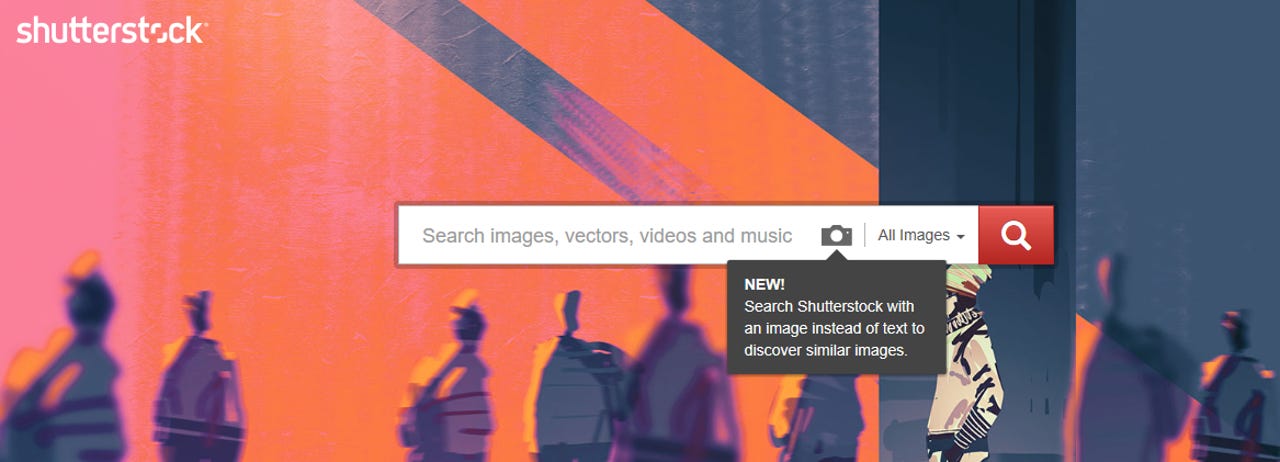Shutterstock reverse image AI search lets you search using images instead of keywords

New York based technology company Shutterstock has been looking at new ways for users to find the perfect image. In March 2016, it introduced reverse-image search as an alternative approach.

People can search its site with an image, instead of keywords, to find the downloadable image they want.
Language translation is not always ideal for every customer. Using the visual search method removes language issues and tends to provide better results compared to text.
The company has customers from around the world searching for that unique image. Sometimes those searches can be very specific, or difficult to put into words.
It noticed that in places like Russia, India, Turkey, and other areas, there was a rise in adoption and success with reverse image search. The tool helped them overcome language barriers that might have impeded their progress.
These countries have made up a large number of the downloads from reverse-image searches compared to text searches.
People in these countries who do typical, traditional text-based searches do not download images at the same rates as people who use reverse-image searches to match their images to ones in the collection.
By providing these countries with a way to search directly from images, they can overcome the language difficulties of text search.
This reverse-image search appeals to a smaller set of users. Many of the users are more visually-minded and prefer to see images instead of typing in text keywords. Shutterstock noticed interesting patterns in its data.
According to its data, those who used reverse-image search for searches wound up making more downloads per search than typically expected from a user with a text-based search.
It found that users who performed at least one reverse image search prior to making a purchase with Shutterstock were 3.49 times more likely to make a subsequent purchase than those who did not.
Text searches do still remain the dominant path of search and discovery on the Shutterstock website. These text-oriented searches will continue to power search, and the company is trying to identify new ways to help users find what they need.
Shutterstock prides itself on being data-driven: Its computer vision team has a data scientist who looks closely at the adoption of these tools.
The team weighs those impressions on what they work on next. If they see customers flocking to it, that's great, but it is even better is when patterns emerge.
Certain patterns have emerged from the data collected over the past ten months since reverse-image search was launched. The metadata that powers the searches stems largely from keywords and descriptions of images that contributors input when they upload.
Since language can differ culture to culture and evolve over time, it is very hard to establish one uniform set of words or phrases for all images that enter the collection of 100 million images.
The site mandates English for contributor keywords, and each individual's fluency in the language can impact results. Visual-based search, on the other hand, which is built around pixel data, will return a licensed image that is a very close match.
If a customer is seeking a specific image with a certain look and feel to it, it is less likely to be represented as prominently in the collection. Customers have to hunt harder for an image that matches their preferences.
In these cases, visual search is much better. Customers can search with their preferred aesthetic and tend to get better results.
Having this kind of neural network at your disposal is useful for several reasons. Keywords are often frustrating, I know there must be an image that represents the keyword, but the original image does not have the same keywords I use.
I tried reverse image search, uploading an image of my cat that I had taken for my review of Tabcat last month. Almost all of the images returned showed similar colour puppies and kittens lying on a bed. Most of the images had some blue items in, either toys or background colour.
I was very impressed with the accuracy of the results and will certainly use reverse image search in future to get the right results returned.
Contributors who upload images want to appeal to as wide an audience as they can. They can then make more money when people choose to download their imagery.
Reverse image search brings all contributors around the world together on an equal footing, to generate revenue - no matter what language they speak.